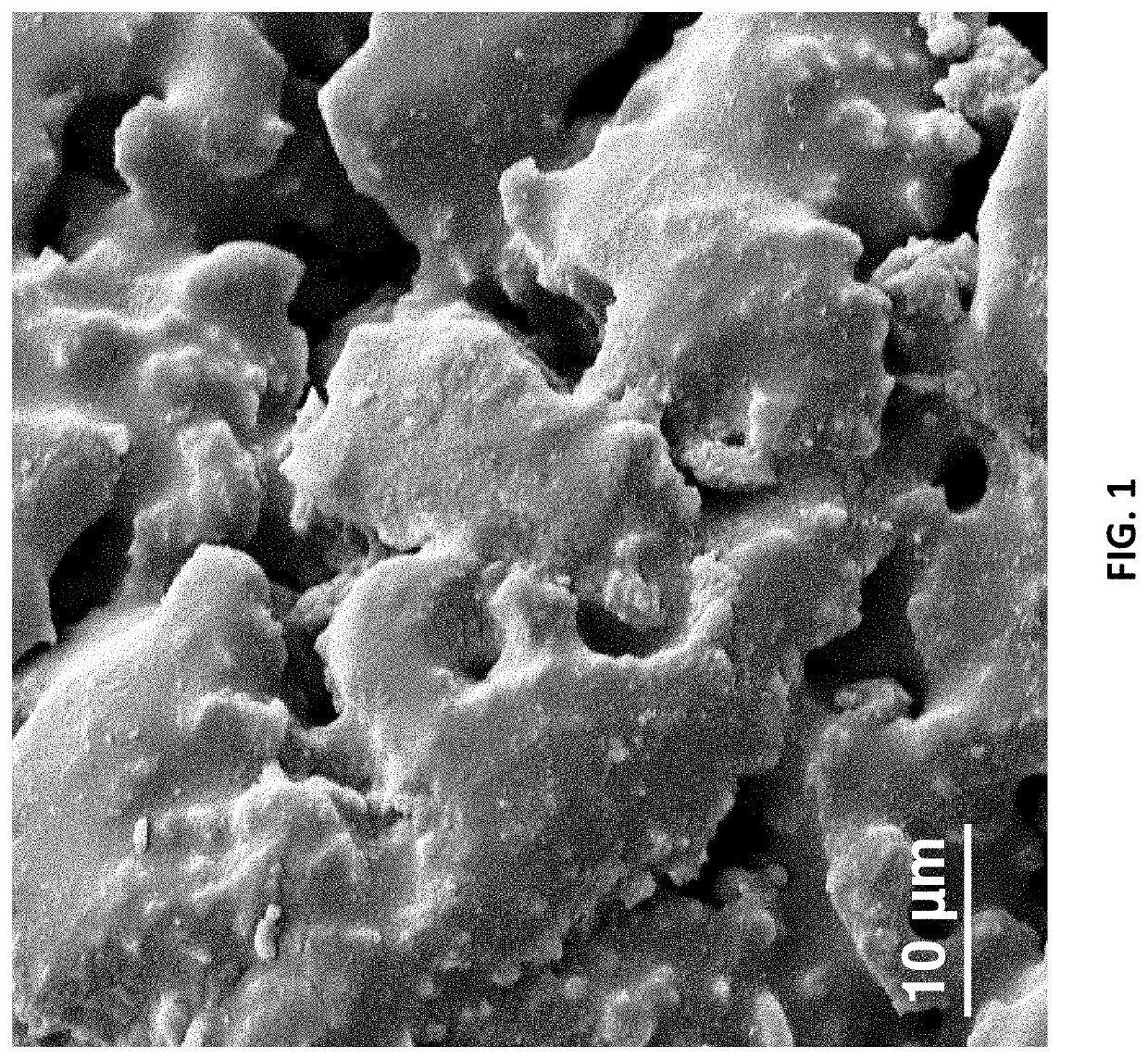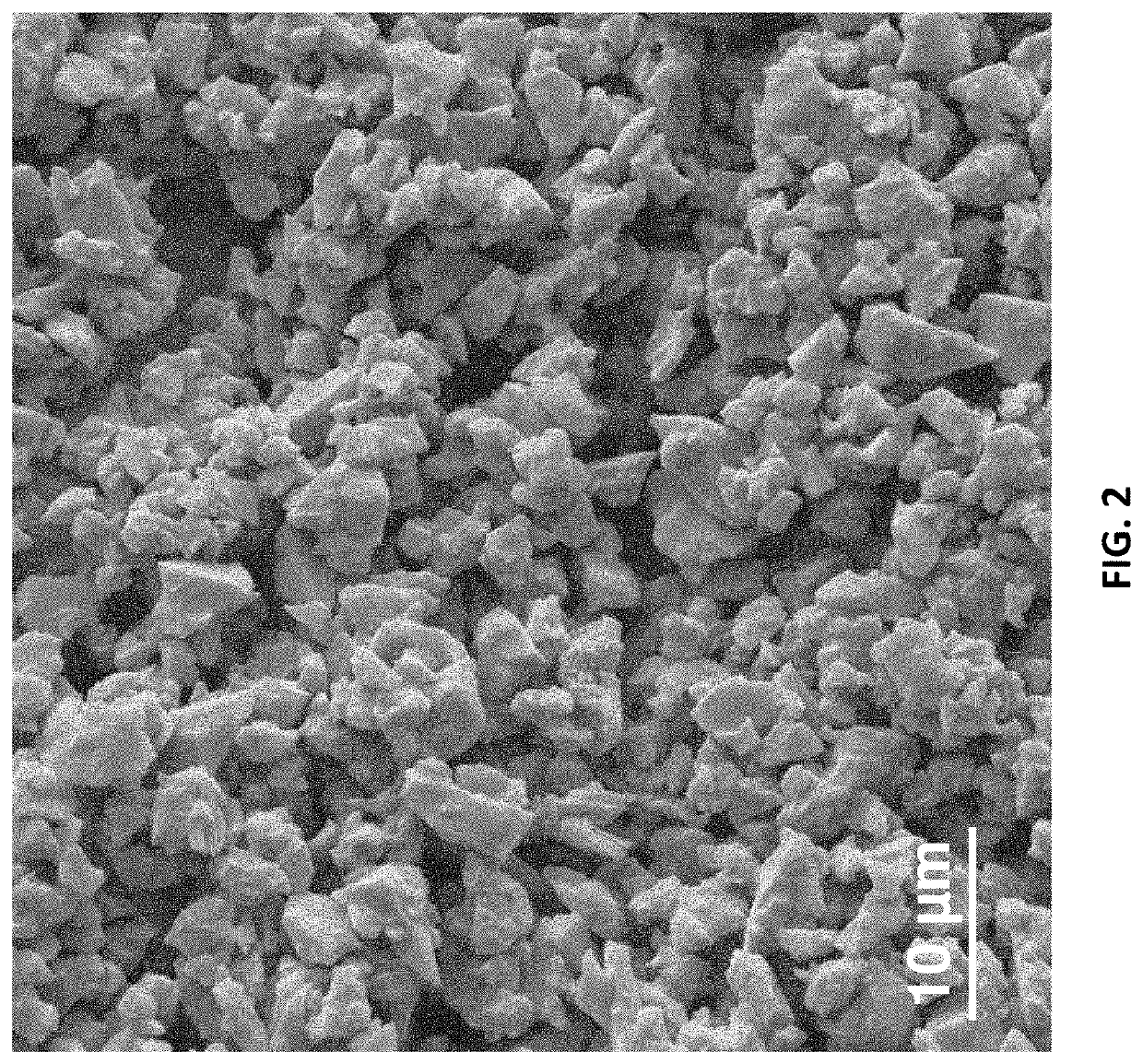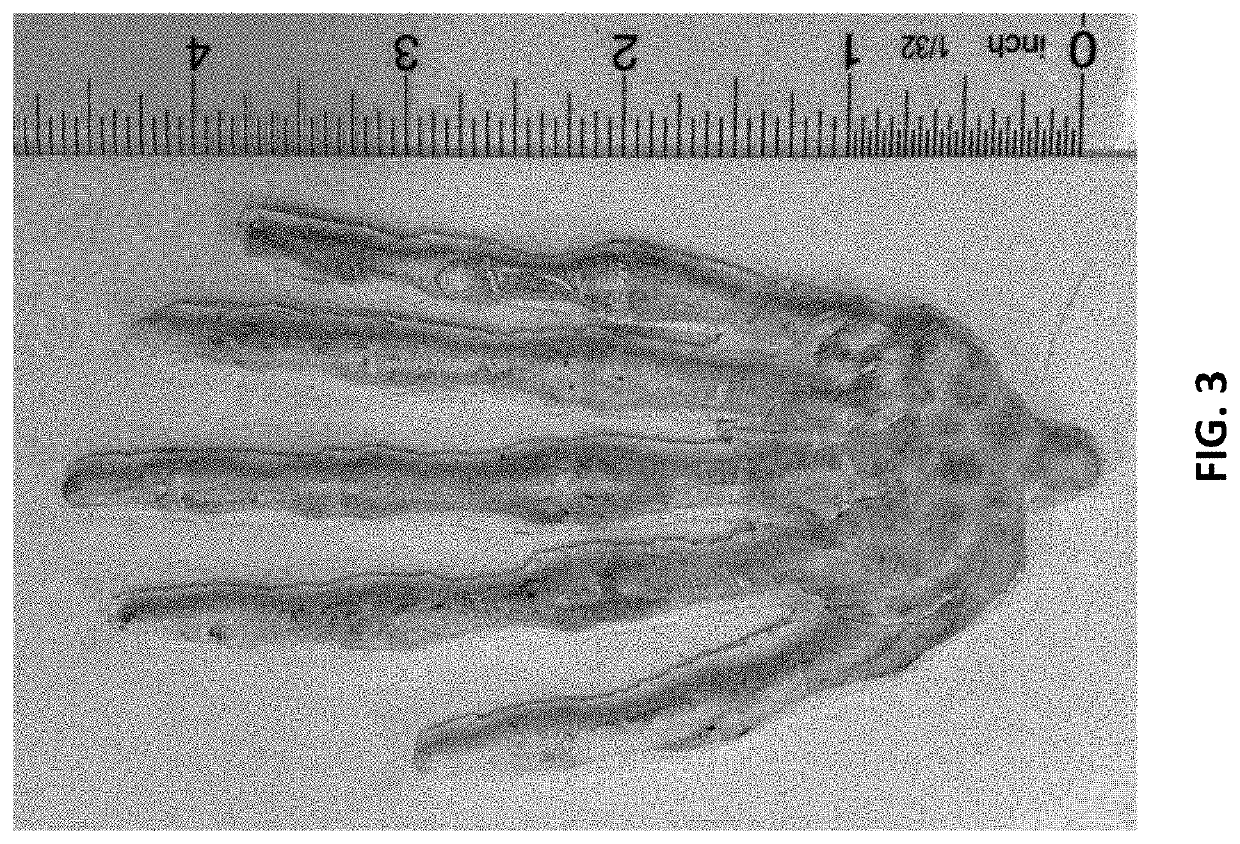Porous Epoxy Nanocomposite Monoliths
- Summary
- Abstract
- Description
- Claims
- Application Information
AI Technical Summary
Benefits of technology
Problems solved by technology
Method used
Image
Examples
examples 1-2
[0070]A purpose of Examples 1 and 2 is to demonstrate results obtained, according to various embodiments. More specifically, these examples show results obtained at a transition of mixed to bicontinuous of a monolith created with a plurality of activated carbon particles having an average size of about 100 nm (obtained from Skyspring Nanomaterials) after removal of the oil. While both examples are bicontinuous, the morphological differences are stark despite the main compositional shift being in the porogen phase, indicating the importance of all components in the process. Molding into micro or nanostructures requires a certain range of viscosity where viscous forces are much greater in magnitude than capillary forces. Further, the long lifetime of the homogenization allows for structures that are of a nearly arbitrary scale.
example 1
[0071]First, the specific amount of two-part epoxy, particles, epoxidized oil, and vegetable oil are placed in a mixing cup. In a specific example shown in FIG. 1, the composite was made of 9.52 wt % Epon 828 (Hexion Inc.) epoxy resin, 9.52 wt. % Versamid 125 (Gabriel Performance Products) curing agent, 4.77 wt % epoxidized soybean oil (from Arkema Inc.), 44.62 wt % canola oil, and 28.58 wt % activated carbon (100 nm, Skyspring Nanomaterials). The components were speed mixed for 1 minute in a Flacktek Speedmixer at 3500 RPM. After the composite gets cured, to make it porous, the porogen (canola oil) was removed by submerging the monolith of the composite into acetone bath for at least 1 day. Finally, the porous composite was dried in air.
[0072]FIG. 1 is an example according to various embodiments, illustrating a scanning electron microscope (SEM) image of monoliths after porogen removal. The revised composition of the monoliths after porogen removal is: 18.18 wt % Epon 828 (Hexion I...
example 2
[0073]First, the specific amount of two-part epoxy, particles, epoxidized oil, and vegetable oil are placed in a mixing cup. In a specific example shown in FIG. 1, the composite was made of 8.00 wt % Epon 828 (Hexion Inc.) epoxy resin, 8.00 wt. % Versamid 125 (Gabriel Performance Products) curing agent, 4.00 wt % epoxidized soybean oil (from Arkema Inc.), 40.00 wt % canola oil, and 40.00 wt % activated carbon (100 nm). The components were speed mixed for 1 minute in a Flacktek Speedmixer at 3500 RPM. After the composite gets cured, to make it porous, the porogen (canola oil) was removed by submerging the monolith of the composite into acetone bath for at least 1 day. Finally, the porous composite was dried in air.
[0074]FIG. 2 is an example according to various embodiments, illustrating a scanning electron microscope (SEM) images of monoliths after porogen removal. The revised composition of the monoliths after porogen removal is: 13.13 wt % Epon 828 (Hexion Inc.) epoxy resin, 13.13 ...
PUM
| Property | Measurement | Unit |
|---|---|---|
| Fraction | aaaaa | aaaaa |
| Fraction | aaaaa | aaaaa |
| Percent by mass | aaaaa | aaaaa |
Abstract
Description
Claims
Application Information
 Login to View More
Login to View More - R&D
- Intellectual Property
- Life Sciences
- Materials
- Tech Scout
- Unparalleled Data Quality
- Higher Quality Content
- 60% Fewer Hallucinations
Browse by: Latest US Patents, China's latest patents, Technical Efficacy Thesaurus, Application Domain, Technology Topic, Popular Technical Reports.
© 2025 PatSnap. All rights reserved.Legal|Privacy policy|Modern Slavery Act Transparency Statement|Sitemap|About US| Contact US: help@patsnap.com



